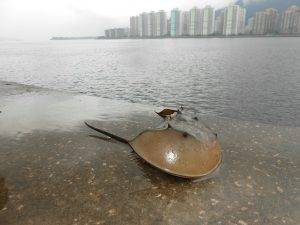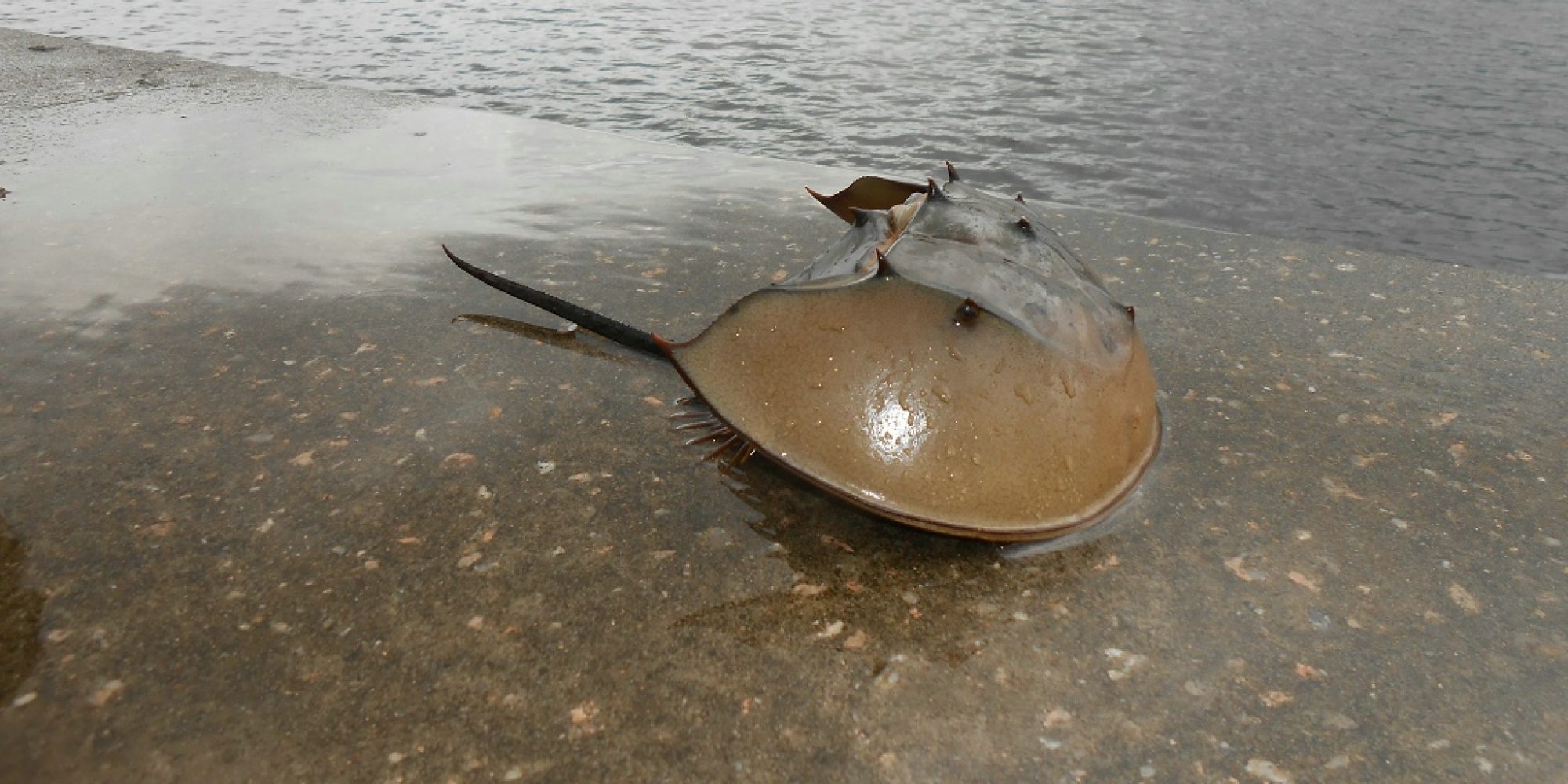發現馬蹄蟹? 即去馬蹄蟹發現報告分享俾我哋知並贏得特別紀念品啦!(活動期將於8月31日截止。紀念品數量有限,送完即止。)
香港的馬蹄蟹
馬蹄蟹,又名鱟(讀音:后),由於牠在地球上出現的時間比恐龍還要早,故有「活化石」之稱。 現存的馬蹄蟹共有四個品種,其中兩種可在香港找到,分別是中國鱟 (Tachypleus tridentatus) 和圓尾鱟 (Carcinoscorpius rotundicauda) (Agriculture, Fisheries and Conservation Department, The Government of the Hong Kong Special Administrative Region, 2013) 。其餘兩個品種是美洲鱟 (Limulus polyphemus) 和 南方鱟 (Tachypleus gigas) 分別能在美洲大西洋沿岸和其他亞洲地區如新加坡及泰國等地找到 (Sekiguchi and Shuster, 2009; Shih et al,2009; Zaldivar-Rae et al, 2009). 。

參考資料
Beekey, M. A., & Mattei, J. H. (2015). The Mismanagement of Limulus polyphemus in Long Island Sound, U.S.A.: What Are the Characteristics of a Population in Decline? Changing Global Perspectives on Horseshoe Crab Biology, Conservation and Management, 433–461. doi: 10.1007/978-3-319-19542-1_25
Faurby, S., King, T. L., Obst, M., Hallerman, E. M., Pertoldi, C., & Funch, P. (2010). Population dynamics of American horseshoe crabs-historic climatic events and recent anthropogenic pressures. Molecular Ecology, 19(15), 3088–3100. doi: 10.1111/j.1365-294x.2010.04732.x
Kenny, N. J., Chan, K. W., Nong, W., Qu, Z., Maeso, I., Yip, H. Y., … & Hui, J. H. (2016). Ancestral whole-genome duplication in the marine chelicerate horseshoe crabs. Heredity, 116(2), 190.
Morton, B., & Lee, C. N. (2010). Spatial and temporal distributions of juvenile horseshoe crabs (Arthropoda: Chelicerata) approaching extirpation along the northwestern shoreline of the New Territories of Hong Kong SAR, China. Journal of Natural History, 45(3-4), 227–251. doi: 10.1080/00222933.2010.522263
Sekiguchi, K., & Shuster, C. N. (2009). Limits on the Global Distribution of Horseshoe Crabs (Limulacea): Lessons Learned from Two Lifetimes of Observations: Asia and America. Biology and Conservation of Horseshoe Crabs, 5–24. doi: 10.1007/978-0-387-89959-6_1
Shin P.K., Li H., Cheung S.G. (2009) Horseshoe Crabs in Hong Kong: Current Population Status and Human Exploitation. In: Tanacredi J., Botton M., Smith D. (eds) Biology and Conservation of Horseshoe Crabs. Springer, Boston, MA
Widener, J. W., & Barlow, R. B. (1999). Decline of a Horseshoe Crab Population on Cape Cod. The Biological Bulletin, 197(2), 300–302. doi: 10.2307/1542664
Zaldívar-Rae, J., Sapién-Silva, R. E., Rosales-Raya, M., & Brockmann, H. J. (2009). American Horseshoe Crabs, Limulus polyphemus, in Mexico: Open Possibilities. Biology and Conservation of Horseshoe Crabs, 97–113. doi: 10.1007/978-0-387-89959-6_6

